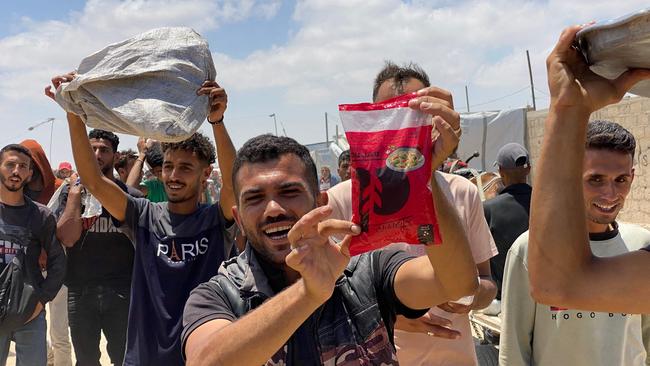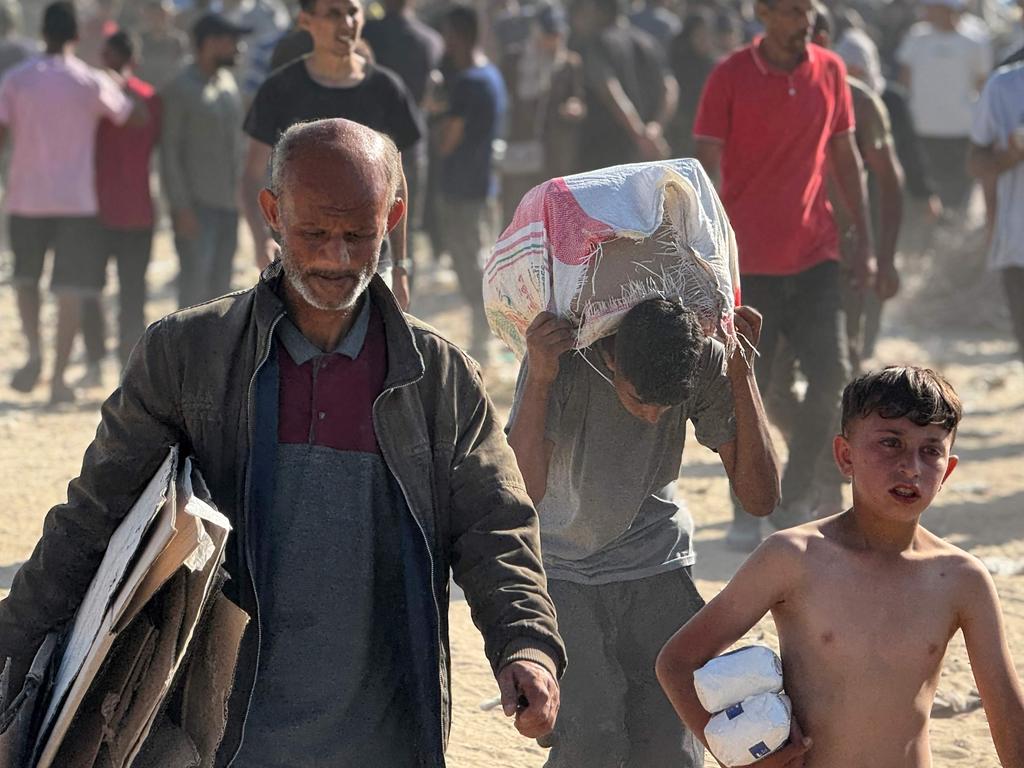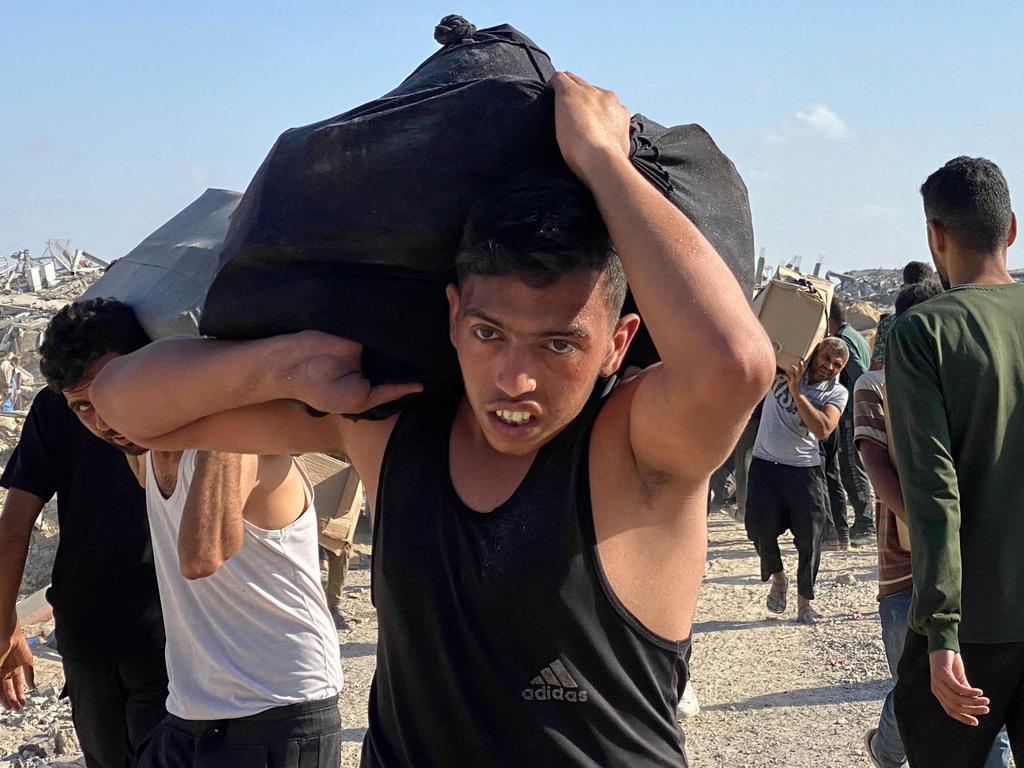Gazans lining up for food say supplies remain limited
New aid system backed by Israel delivers more food Wednesday after chaos and looting a day earlier

A new aid system backed by Israel delivered more food in Gaza on Wednesday, but residents who lined up outside the distribution centres complained of limited supplies and disorder, one day after the effort was marred by scenes of chaos and looting.
Thousands of Palestinians desperate for food lined up outside two distribution centres in southern Gaza on Wednesday, despite concerns over security. Large crowds had overwhelmed one of the centres a day earlier and Israeli forces said they fired warning shots outside the compound. As the number of people surged after a slow start, witnesses said there was disorder and crowding as they heard about food running out.
The Gaza Humanitarian Foundation, a private entity overseeing the new aid system, said that it was operating the two distribution sites in southern Gaza on Wednesday afternoon without unusual incidents. It has distributed approximately 14,550 boxes of food since it began operations on Monday, GHF said, but didn’t immediately respond to a request for comment on supplies running out and disorder at the distribution sites on Wednesday.

Nizar Thabet, 37, who walked to one of the distribution sites near the Israeli-built Morag corridor in Rafah with his two hungry children, said he was able to get his hands on lentils, rice, and packs of pasta by asking others to give him some rather than receiving his own box.
“Some boxes were opened — quantities were gone. I got food from others who hadn’t eaten in 20 days,” he said. Many others left empty-handed because supplies ran out, he said.
Israel was pressured to end its more than two-month blockade on Gaza, which it says was aimed at pressuring Hamas to release the hostages. During this period, no aid, medicine or fuel entered the enclave, leading to widespread hunger, according to residents and aid groups. The humanitarian crisis led to an international outcry, including from the US, Israel’s close ally, which pushed Israel to lift the blockade earlier this month.

But little aid has since reached Gazans, according to residents, and many are surviving on just one meal a day, mainly bread and canned goods.
According to the new plan, aid is to be handed out directly to Gazan families at distribution sites with the help of private security companies, to prevent Hamas from taking control of the aid, as Israel alleges. Hamas denies that it seizes the aid. Israeli military forces are stationed nearby for security.
Many Gazans who are facing severe food shortages say they will do anything to feed their families, but the scenes of chaos, looting and Israeli shooting near the compound Tuesday were concerning, they said.
“The scenes were heartbreaking,” said Mohammed Al-Saafin, 25 years old, who is sheltering in the city of Deir al-Balah in central Gaza. “People were desperate, running after trucks, just trying to get a bag of flour or some canned food. I won’t go — it’s too dangerous,” he said.

The new aid plan overhauls the way aid has entered Gaza through international aid groups since the start of the war, and has faced criticism from more than 20 countries and the United Nations. Critics say it puts people unnecessarily at risk and can’t meet the needs of the population on the ground. Most of the planned distribution sites are situated in southern Gaza, which makes reaching them difficult for those who live elsewhere or are unable to move.
“The UN has refused to participate in this scheme, warning that it is logistically unworkable and violates humanitarian principles by using aid as a tool in Israel’s broader efforts to depopulate areas of Gaza,” Jonathan Whittall, the head of the UN Office for the Coordination of Humanitarian Affairs, said at a press briefing Wednesday.
Since the start of the war, Israel has issued evacuation orders that cover widespread areas in Gaza, which it says are aimed at ensuring the population is out of harm’s way in active combat areas but which have repeatedly displaced Gazans.
Momen Hassouneh, a 33-year-old father to three young children who is living in the al-Rimal neighbourhood in Gaza City, located in the strip’s north, said it would be difficult to make the journey to distribution centres in the south.

“Transportation is difficult. If the roads were open, we’d want to go,” Hassouneh said.
The continuing war makes people fearful of moving unless forced. Israel says that it launched a renewed offensive in the enclave to crush Hamas. Israeli Prime Minister Benjamin Netanyahu said Wednesday that Israel had killed Hamas’s top leader in Gaza, Mohammed Sinwar, after targeting him in a strike earlier this month.
Mohammad Abo Nasem, 38 and a father of three children, is living in a tent in Khan Younis, after being displaced six times since the start of the war. He said he was initially encouraged by photos of people receiving aid on Tuesday, but was deterred by the large crowds.
“I didn’t like what happened yesterday because there was no order,” he said. “If there was a system that was more comfortable for people and spared people the humiliation of standing in long lines and chaos, if there was a better mechanism, everyone could get their share without problems or crowding,” he said.
But with a family to feed he is desperate. “I literally have nothing to feed my family. No lentils, no pasta, nothing.” He said he would go to a distribution centre tomorrow to try his luck.
Wall Street Journal






To join the conversation, please log in. Don't have an account? Register
Join the conversation, you are commenting as Logout